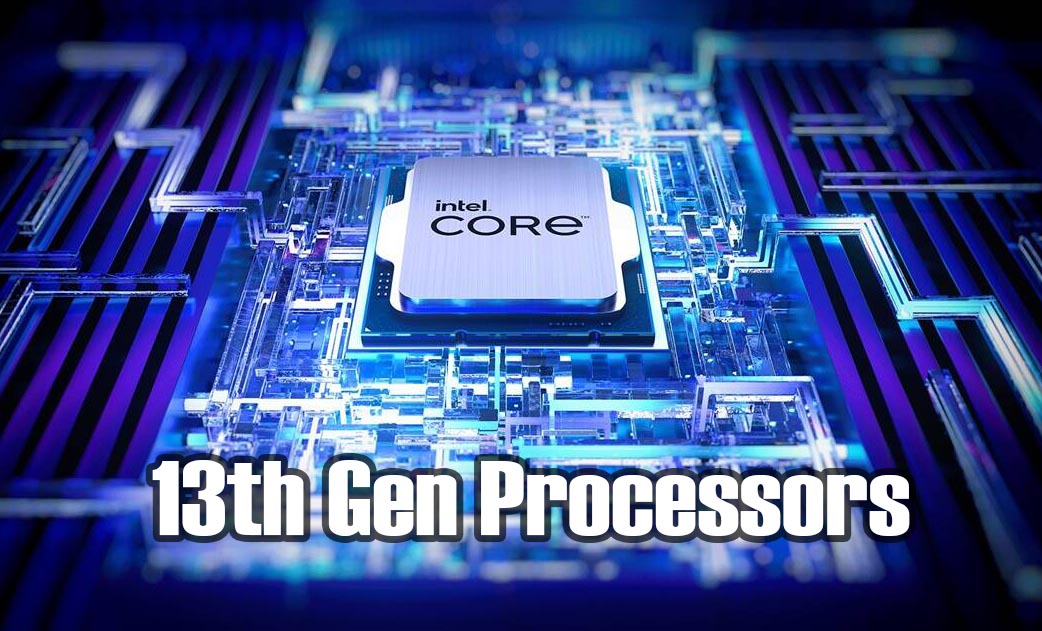Unleashing the Power of 13th Generation Processors

The 13th generation of processors, also known as Raptor Lake, is the latest offering from Intel and represents a significant step forward in performance and efficiency. These processors feature a hybrid architecture that combines high-performance and high-efficiency cores, allowing for dynamic workload allocation and better overall performance and power efficiency.
One of the key features of the 13th-generation processors is their versatility. They are well-suited for a wide range of applications, from gaming to content creation to general productivity. They also support a range of technologies, such as Thunderbolt 4 and Wi-Fi 6E, which provide faster data transfer speeds and better wireless coverage.
The processors use Intel’s new 10nm SuperFin process, which enables higher clock speeds and better power efficiency. They also offer up to 16 cores and 24 threads, making them ideal for running multiple demanding applications at once. Additionally, they support DDR5 memory, providing higher bandwidth and lower latency for faster data access.
One of the key benefits of the 13th generation processors for users is their power efficiency. The processors feature Intel’s new Thread Director technology, which dynamically manages workloads across the different cores to optimize performance and efficiency. This means that the processor can allocate resources more efficiently to different applications, leading to better overall performance and power efficiency.
The 13th generation processors also feature Intel’s new Integrated Graphics, which provides improved graphics performance compared to previous generations of processors. This means that users can enjoy better graphics performance without needing a dedicated graphics card.
Overall, the 13th-generation processors offer significant performance and efficiency improvements over their predecessors, making them a great choice for users who demand high performance and versatility from their devices. Whether you’re a gamer, content creator, or general user, the 13th-generation processors are definitely worth considering.
Define Performance-cores and Efficient-cores.
Performance-cores (P-cores):
-
- Are optimized to handle single and lightly threaded performance.
-
- Enhance gaming and productivity workload.
Efficient-cores (E-cores):
-
- Are optimized to handle scaling highly threaded workloads.
-
- Minimize interruptions from background task management.
What is Intel® Thread Director?
Intel® Thread Director sends the right workload to the right core at the right time. It helps prioritize and manage the distribution of workloads, sending tasks to the most optimized thread. This feature is on by default and works in tandem with the operating system for intelligent workload distribution. To get the full capabilities of Intel Thread Director, pair a select 13th Gen Intel® Core™ desktop processor with Windows 11.
What are the overclocking features?
Intel provides the best memory or motherboard overclocking experiences for everyone from – experts to beginners. With an unlocked Intel core processor, anyone can overclock using Intel® Extreme Tuning Utility with Intel® Speed Optimizer. Intel® Speed Optimizer provides a one click overclocking (removed memory comment) which makes the overclocking process easy.

Processors
-
 AMD Ryzen 7 5700X3D Desktop Processor (Not Sold Separately - Systems Only)
රු72,500.00or 3 X රු24,166.67 with
AMD Ryzen 7 5700X3D Desktop Processor (Not Sold Separately - Systems Only)
රු72,500.00or 3 X රු24,166.67 with

-
 Intel Core Ultra 9 285K Processor (Systems Only)
රු194,000.00or 3 X රු64,666.67 with
Intel Core Ultra 9 285K Processor (Systems Only)
රු194,000.00or 3 X රු64,666.67 with

-
 Intel Core Ultra 7 265K Processor (Systems Only)
රු134,500.00or 3 X රු44,833.33 with
Intel Core Ultra 7 265K Processor (Systems Only)
රු134,500.00or 3 X රු44,833.33 with

-
 Intel Core Ultra 5 245K Processor (Systems Only)
රු109,000.00or 3 X රු36,333.33 with
Intel Core Ultra 5 245K Processor (Systems Only)
රු109,000.00or 3 X රු36,333.33 with

-
 AMD Ryzen 5 8600G Desktop Processor (Not Sold Separately – Systems Only)
රු68,000.00or 3 X රු22,666.67 with
AMD Ryzen 5 8600G Desktop Processor (Not Sold Separately – Systems Only)
රු68,000.00or 3 X රු22,666.67 with

Advancements in integrated graphics and support for gaming and content creation
Integrated graphics have made significant advancements in recent years, thanks to hardware and software improvements. Shared memory architectures allow for greater flexibility and performance, as the integrated graphics processor (IGP) can access system memory instead of relying on its own dedicated memory. New graphics processing technologies, such as AMD's Vega and NVIDIA's Turing architectures, provide improved performance and efficiency. Many operating systems and applications now optimize for integrated graphics, enabling applications like video editing and 3D modeling to run smoothly without a dedicated graphics card. Overall, these advancements have made integrated graphics a viable alternative for gaming and content creation for many users.















